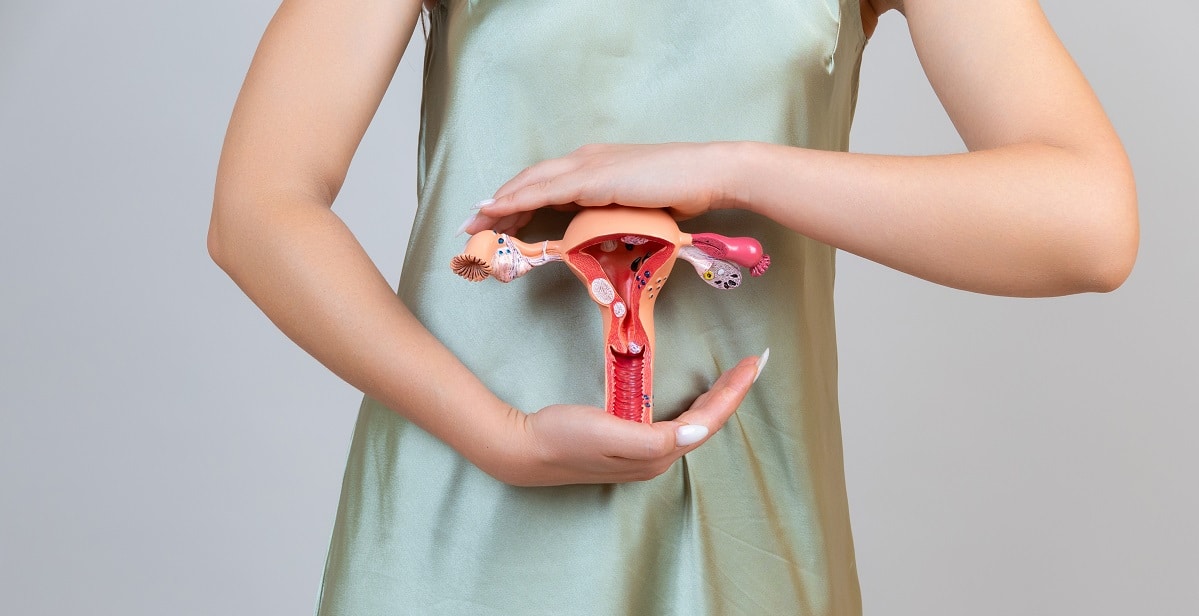Abnormal Uterine Bleeding

Abnormal Uterine Bleeding (AUB), previously referred to as Dysfunctional Uterine Bleeding (DUB), is a broad term which describes irregularities in a woman’s menstrual cycle. It involves changes in frequency, regularity, duration, and volume of menstrual blood flow outside of pregnancy.1a
A normal menstrual cycle occurs between every 24 – 38 days, lasts 2 – 7 days, with approximately 5 – 80 millilitres of blood loss. Variations outside any of these parameters is an abnormal bleeding pattern.1b
AUB is responsible for roughly one-third of all outpatient gynaecological visits, particularly in the perimenopausal period (period immediately prior to menopause and the first year after menopause.)2a More than 90 % of women experience at least one episode of AUB in their lifetime, and 78 % of them have at least three episodes of AUB during their transition to menopause.2b
It is a significant disorder in women as it may impact negatively on the social, financial, emotional, and personal life of the patient and also impacts work and relationships.3a
CAUSES OF AUB
Any derangement in the structure of the uterus (such as leiomyoma, polyps, adenomyosis, malignancy, or hyperplasia), derangements to the clotting pathways (coagulopathies), or disruption of the hypothalamic-pituitary-ovarian axis (through ovulatory/endocrine disorders) can affect menstruation and lead to abnormal uterine bleeding.1e
PALM-COEIN is a useful acronym provided by the International Federation of Obstetrics and Gynecology (FIGO) to classify the underlying causes of abnormal uterine bleeding (Figure 1).1c,2c

“Iatrogenic” refers to any adverse condition or side effect that arises as a result of medical treatment or intervention.
Conditions to be included in the ‘not otherwise classified’ category include pelvic inflammatory disease, chronic liver disease, and cervicitis.1d
RECOGNISING THE SYMPTOMS
Abnormal Bleeding4
Bleeding in any of the following situations is considered abnormal:
- Bleeding or spotting between periods
- Bleeding or spotting after sex
- Heavy bleeding during your period
– Bleeding that soaks through one or more tampons or pads every hour
– Bleeding that lasts more than 7 days - Menstrual cycles that are longer than 35 days or shorter than 21 days
- “Irregular” periods in which cycle length varies by more than 7 to 9 days
- Not having a period for 3 to 6 months
- Bleeding after menopause
Associated symptoms/Systemic symptoms1f
These symptoms may be associated with an underlying cause for or consequence of abnormal bleeding:
- Weight loss
- Pain
- Discharge
- Bowel or bladder symptoms
- Signs/symptoms of anaemia
- Signs/symptoms or history of a bleeding disorder
- Signs/symptoms or history of endocrine disorders
EVALUATION AND DIAGNOSIS OF AUB
It is important to establish the origin of the abnormal bleeding to ensure it is not from a non-gynaecological source and to rule out pregnancy.3b
A Healthcare Practitioner (HCP) will perform a routine gynaecological assessment, taking a detailed medical history, including cervical examination and pap smear screening. History includes medication history, and evaluating risk factors for endometrial hyperplasia (thickening) or endometrial cancer (as AUB is an important sign of malignancy).3c
Laboratory tests and imaging studies (transvaginal ultrasound, MRI, and hysteroscopy) can assist with identifying the underlying causes of bleeding.1g

TREATMENT OPTIONS FOR PATIENTS WITH AUB
Treatment of AUB should be individualised based on the patient’s specific profile.
This approach focuses on the cause of bleeding, other associated medical conditions and the desire for fertility. In general, medical options are preferred as initial treatment for AUB.1h

PROGNOSIS
The prognosis for abnormal uterine bleeding is favourable depending on the cause of bleeding. The main goal of evaluating and treating chronic AUB is to rule out serious conditions such as malignancy and improve the patient’s quality of life.1i
Correct evaluation and prompt treatment will reduce complications such as anaemia, infertility and delayed diagnosis of endometrial cancer.1j
Last reviewed: 25 February 2022
Related Brochures

menopause

endometriosis
- Painful Periods
- Heavy ....
